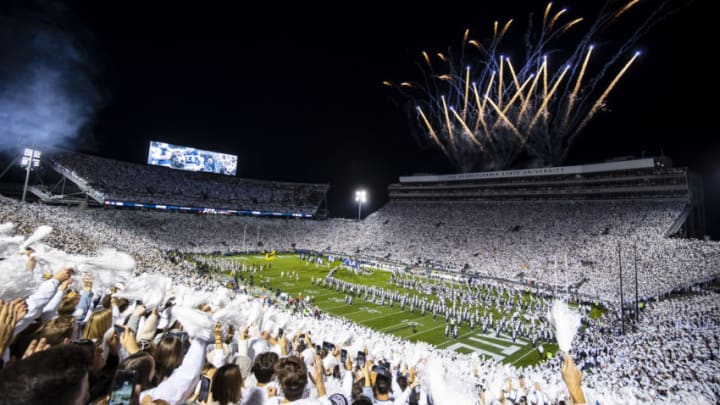The area Penn State is located within is known perhaps better as its coined nickname: Happy Valley. Where did this name originate from?
The Pennsylvania State University (better known as simply: Penn State) and Beaver Stadium, Penn State’s 100,000-plus capacity college football venue, are located in Happy Valley, a charming nickname for the area State College, PA is in.
While those growing up in the area probably don’t think twice about the nickname, to an outsider, the monicker is a curious one. What makes Happy Valley so joyous? And where did the nickname originate from?
Why is Penn State called Happy Valley?
Firstly, a small clarification. Penn State is not called Happy Valley, rather, the geographic valley Penn State resides in is called Happy Valley. The name has become somewhat of an informal nickname for the school itself over the years, though, as the university is the largest social and economic driver of the area.
So, Penn State is incorrectly called Happy Valley because it’s located there.
But that doesn’t answer the question of where Happy Valley itself got its name. In that case, there’s actually some disagreement over the origin of the name, but the theories all probably have some sort of claim to it.
Some believe the name was first referenced as a subtle description of the area that caught on due to both facetious and authentic reasons that described the life events associated with the area (independence, adulthood, employment) or were actually digs at the area by people who felt the valley was not, in fact, all that happy.
Another explanation suggests that the area’s generally positive state of mind and unique, awe-inspiring scenery are why it’s called Happy Valley. The area is genuinely impressive, with rolling hills and mountains defining the region’s facade.
But the most common (and believable) reasoning it is derived from the area’s resilience in the Economic Depression of the 1930s. Because the University was insulated from much of the economic stress at the time, the area avoided much of the negative effects of the nationwide depression and was thus, much happier than the rest of the world.
With just two losses in 2022 — a tie for the lowest since 2005 — the Nittany Lion football team certainly hopes it can follow that up with another quality season in 2023 to add to the positivity in the valley.
